#royal museums of arts and history
Explore tagged Tumblr posts
Photo

Day Dress
c.1880
Belgium
Royal Museums of Arts & History, Brussels, Belgium (Inventory number: C 816)
#day dress#fashion history#historical fashion#1880s#19th century#belle epoque#1880#blue#cotton#polka dot#polka dots#belgium#royal museums of arts and history#popular
859 notes
·
View notes
Text
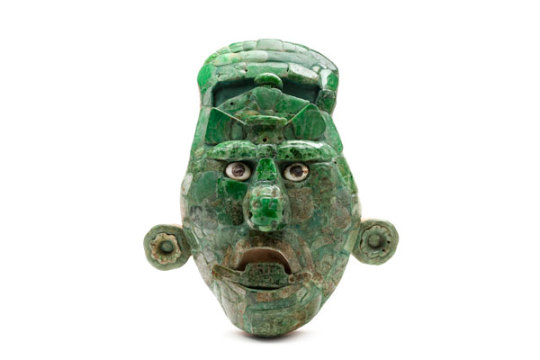
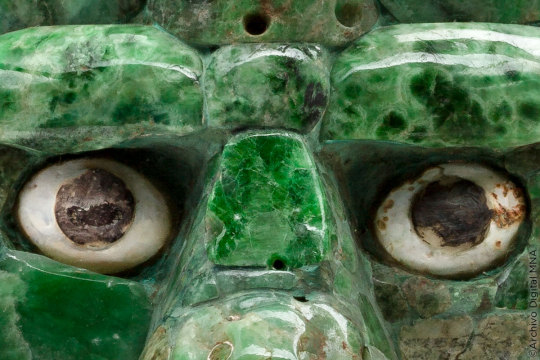
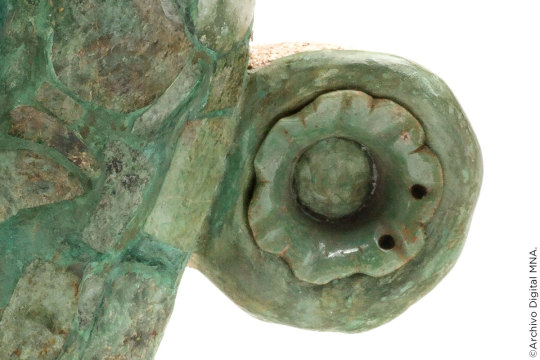
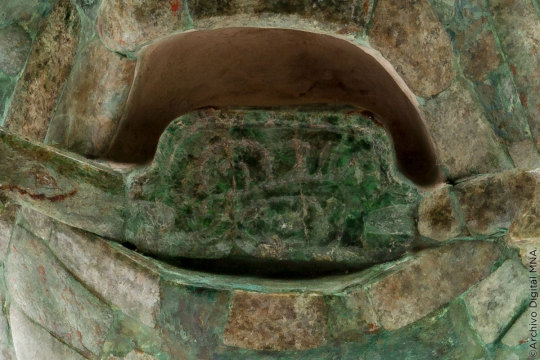
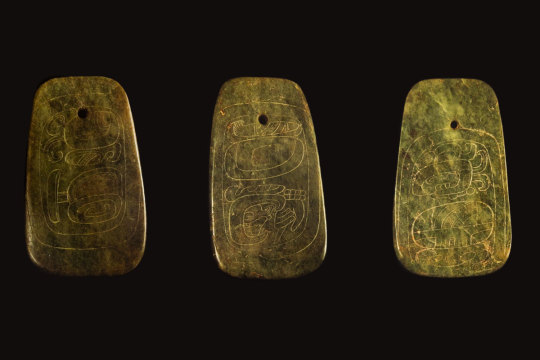
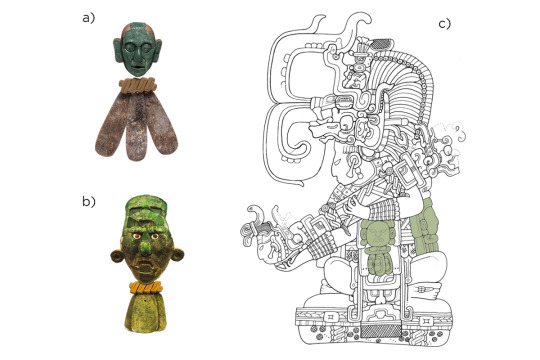
~ The royal belt of Calakmulhul.
▪︎ Towards mid-November 1988, researchers from the Calakmul Project discovered in Building III a crypt that housed the remains of an ancient sovereign accompanied by a modest funerary trousseau. Among the objects deposited in the tomb were three green stone masks. One must have been placed on his face, the other two smaller ones were interpreted as medallions or pectorals.
The belt was part of the dignitaries' attire, as can be seen in some steles. It was made up of a small mask from which three green stone axes hung. The masks represented deities or embodied ancestors. The axes, when hitting each other, generate a tinkling sound that is heard like the murmur of the wind. By wearing the belt, the rulers were transfigured into the axis mundi , in the center of the Universe.
#history#museum#archeology#archaeology#the royal belt of calakmul#calakmul#masks#ancient#ancient art#ancient history#pectoral#axis mundis#mexican#mexico#Mesoamerica#pre columbian
1K notes
·
View notes
Text

#FrogFriday 🐸:
#Frog Vase
Nazca, Peru 100 BCE - 600 CE
terracotta, paint 12.4 cm x 8.5 cm x 15 cm
Royal Museums of Art and History, Brussels AAM 00046.7.188
#animals in art#frog#Frog Friday#Nazca art#Peruvian art#South American art#Indigenous art#effigy vessel#animal effigy#ancient art#ceramics#pottery#terracotta#Royal Museums of Art and History#spots
36 notes
·
View notes
Text

"Día de invierno, Medevi", 1885 Por Oscar Törn å, pintor de paisajes, ilustrador y artista gráfico sueco (1842-1894) Colección privada De ascendencia francesa, Oscar Törn å comenzó a recibir una educación en los oficios cuando tenía catorce años, pero finalmente mostró una aptitud para el arte. Gracias al apoyo de algunos vecinos acomodados, pudo inscribirse en la Real Academia Sueca de Bellas Artes y participó en la exposición de la Academia de 1868. Fue galardonado con una medalla en 1870 por una de sus primeras pinturas de paisaje. Impaciente por recibir una beca de viaje, despegó por su cuenta en 1873 y se fue a Düsseldorf, pero no estaba contento con sus métodos de enseñanza y más tarde sintió que había perdido su tiempo allí. Finalmente, en 1874, obtuvo una beca Trave y se fue a París vía Bruselas. Sus sentimientos acerca de sus estudios en Alemania fueron confirmados cuando visitó el Salón y estuvo expuesto a los estilos más Naturalistas que prevalecen allí. Durante su primer verano en Francia, vivió en Montigny-sur-Loing y Marlotte, pintando escenas de bosques y ríos. El archipiélago de Estocolmo, Södermanland y Östergötland fueron sus lugares favoritos para pintar. Pequeñas selecciones de su obra pueden verse en el Göteborgs konstmuseum, el Museo Nacional y el Museo Nordiska.
En 1877, exhibió dos pinturas de paisaje en el Salón y recibieron elogios del crítico, Louis Edmond Duranty. Uno fue comprado por Adolphe Goupil. Hizo nuevos viajes de pintura a Marlotte, Nemours y Grez, pero su presentación en el Salón de 1878 no fue tan exitosa. A su regreso a Suecia, inmediatamente organizó una exposición. Esta vez, causó una impresión, ya que la mayoría de los pintores suecos de paisaje seguían haciendo bocetos al aire libre y completando sus pinturas en sus estudios, en lugar de trabajar en plein aire. Varias de sus obras fueron compradas por la Royal Academy para ser utilizadas en material de estudio en sus clases de paisaje. El archipiélago de Estocolmo, Södermanland y Östergötland fueron sus lugares favoritos para pintar. En 1885, se unió a un grupo conocido como los oponentes (Opponenterna) que protestaba contra lo que sentían que eran los métodos anticuados de enseñar en la Royal Academy. Sin embargo, después de participar en una de sus exposiciones, abandonó el grupo porque sentía que era contraproducente. A finales de la década de 1880, una combinación de mala salud y resistencia a nuevos métodos o estilos finalmente redujo la calidad de su trabajo.
#museoparticular#history#arte#artlovers#art#impresionismo#homoerotismo#painting#gayart#art history#artwork#culture#museums#vintage#curators#museum#suecia#estocolmo#Royal Academy
21 notes
·
View notes
Text


Right Gauntlet for King Philip of Spain (1527-1598), Worcester Art Museum.
#dark academia#light academia#classical#academia aesthetic#escapism#academia#books and libraries#classic literature#books#architecture#object#gauntlet#King Philip of Spain#1500s#16th century#worcester art museum#royal core#cottage core#history#historical#aesthetics#mood#vibe#tumblr
215 notes
·
View notes
Text

Queen Dowager Juliane Marie
Artist: Vigilius Eriksen (Danish, 1722–1782)
Date: 1772
Medium: Oil on canvas
Collection: Statens Museum for Kunst, Copenhagen, Denmark
Juliana Maria of Brunswick-Wolfenbüttel
Juliana Maria of Brunswick-Wolfenbüttel-Bevern (Danish: Juliane Marie; 4 September 1729 – 10 October 1796) was Queen of Denmark and Norway from 1752 to 1766 as the second consort of King Frederick V of Denmark and Norway. She was mother to the prince-regent, Hereditary Prince Frederick of Denmark and Norway, and was herself de facto regent from 1772 to 1784. King Christian VIII of Denmark and every subsequent Danish monarch excluding Christian IX descends from her.
#portrait#full length#queen dowager#oil on canvas#artwork#danish culture#queen dowager juliane marie#oil painting#fine art#queen of denmark and norway#danish art#interior#arm chair#velvet curtains#white dress#lace sleeves#embroidery#lace collar#hat#veil#house of welf#danish royal family#danish history#vigilius eriksen#danish painter#european art#statens museum#18th century painting
19 notes
·
View notes
Text

Sekhmet sees what you did there.
When: Late Period
Where: Royal Museums of Art and History, Brussels
52 notes
·
View notes
Text
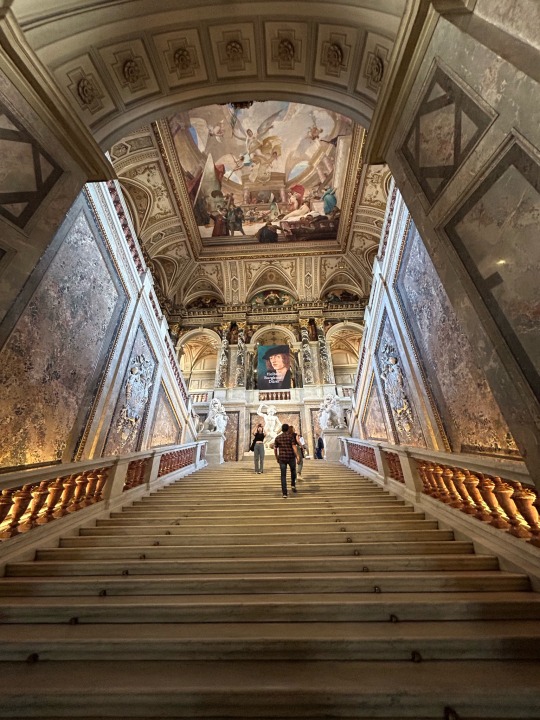
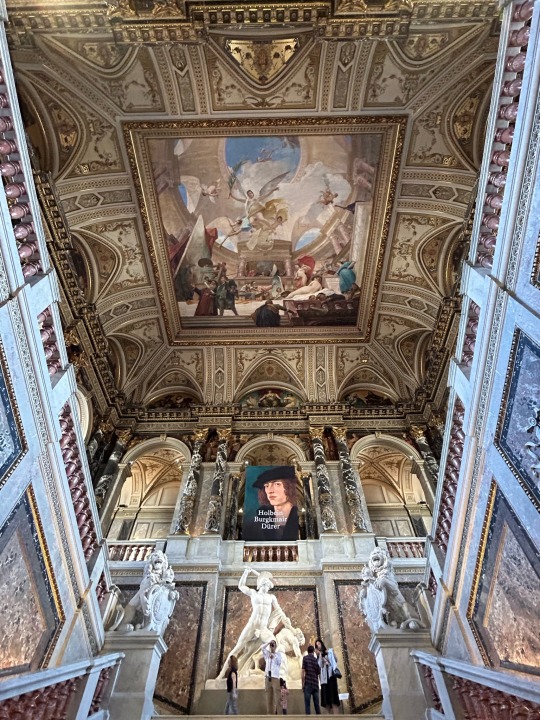
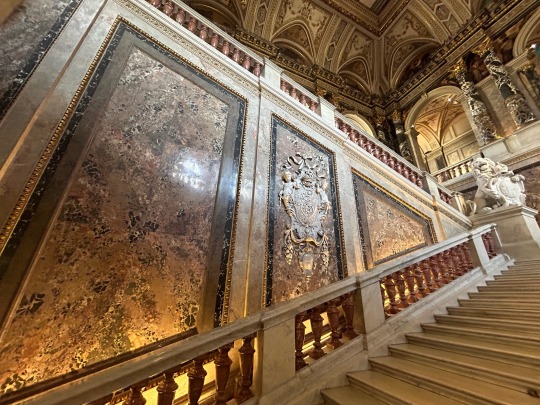

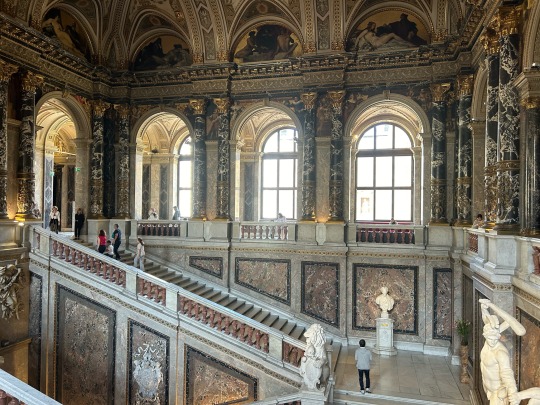
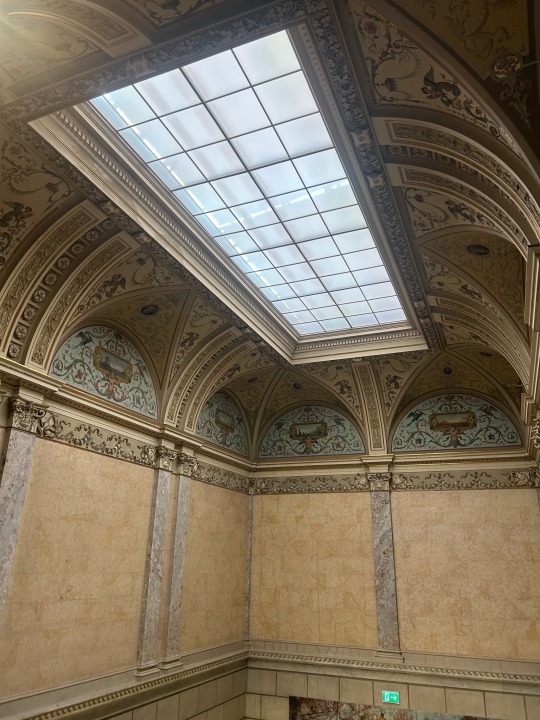
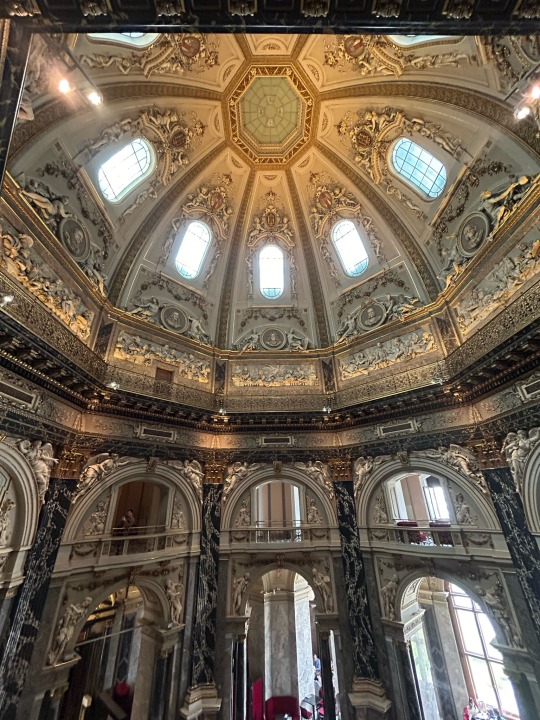
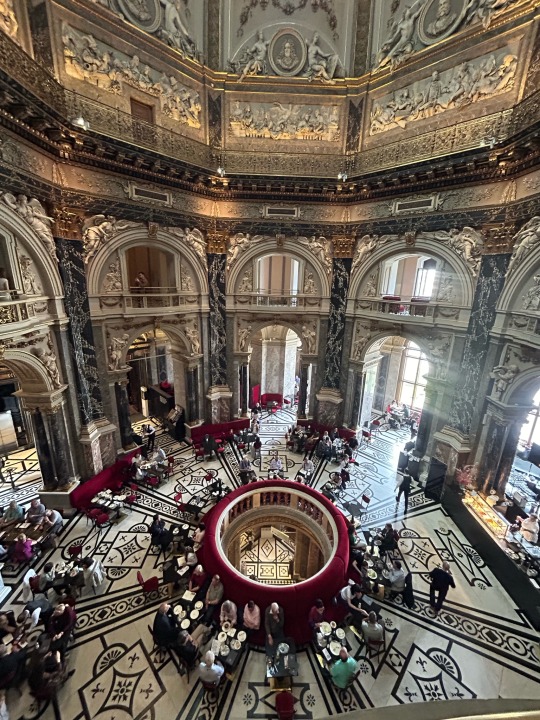

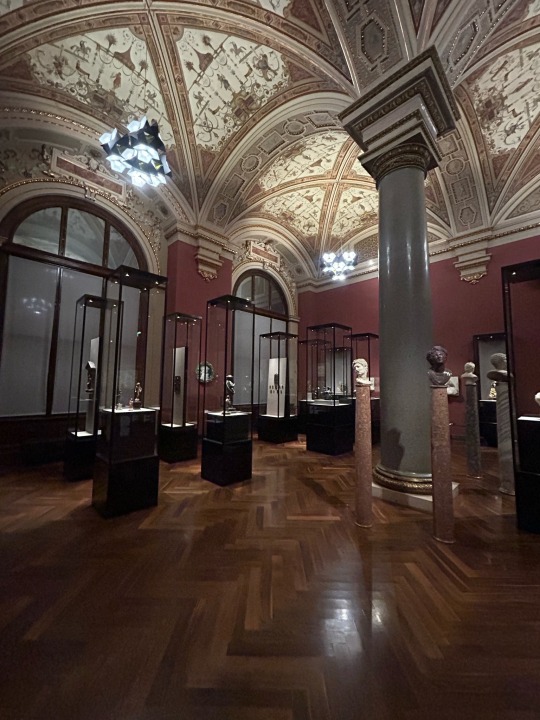
More interior pics from the kunsthistorisches museum in Vienna.
Absolutely loved this place.
Every piece of this building is pure art, filled with more and more art. Amazing ✨
#love#personal#personal diary#vibes#earth#my post#mood#fantasy#wild living#daily life#photography#art#vienna#austria#kunsthistorisches museum#palace#beautiful#buildings#architecture#history#cute#aesthetic#my pictures#my pics#hippie#adventure#hippie adventurer#royal core
32 notes
·
View notes
Text

Tomb or grave cover (cenotaph) with Shi'i inscriptions. Muhammad b. Ahmad. Iran, 11-12th Century CE.
Royal Ontario Museum (ROM)
#royal ontario museum#museum#iranian art#iranian#Iran#Muhammad b. Ahmad#art#culture#middle eastern history#medieval history#medieval#Middle Ages
8 notes
·
View notes
Text





#Baroque#LuxuryInterior#HistoricalDesign#Royal#Gold#ArtAndCulture#Барокко#ИсторическийДизайн#КоролевскийСтиль#ЗолотыеДетали#ИскусствоИКультура#hermitage#art#culture#Luxury#History#Royalty#Art#Culture#saint peterburg#saintpetersburg#russia#museum#atmosphere
10 notes
·
View notes
Text


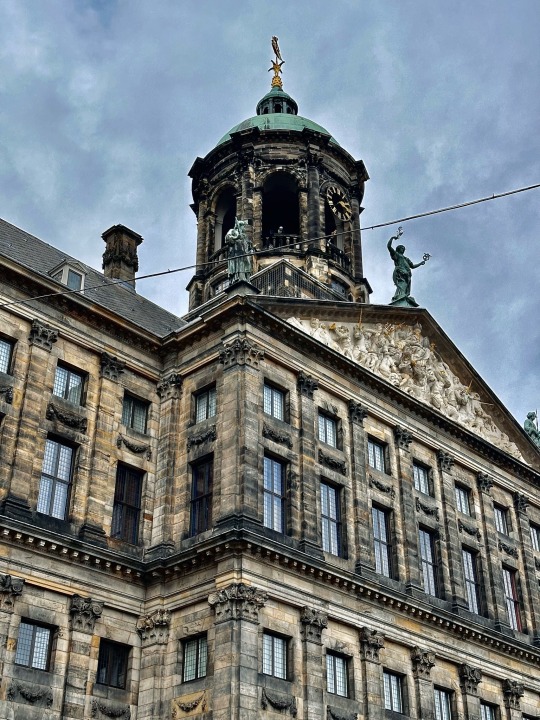
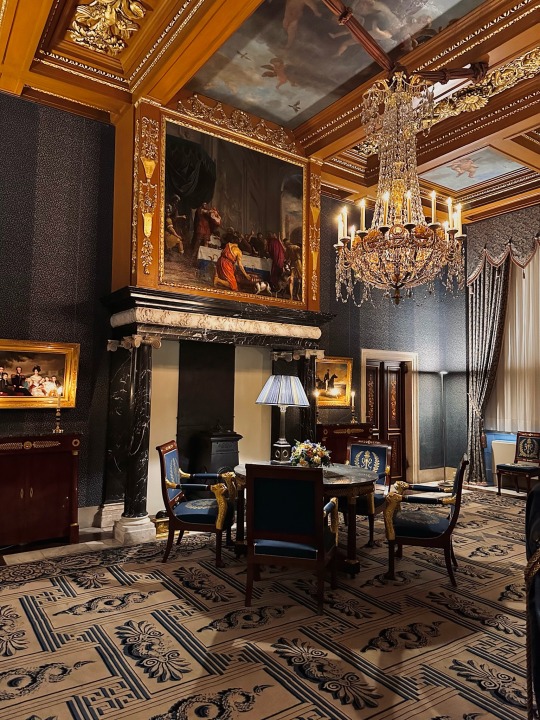
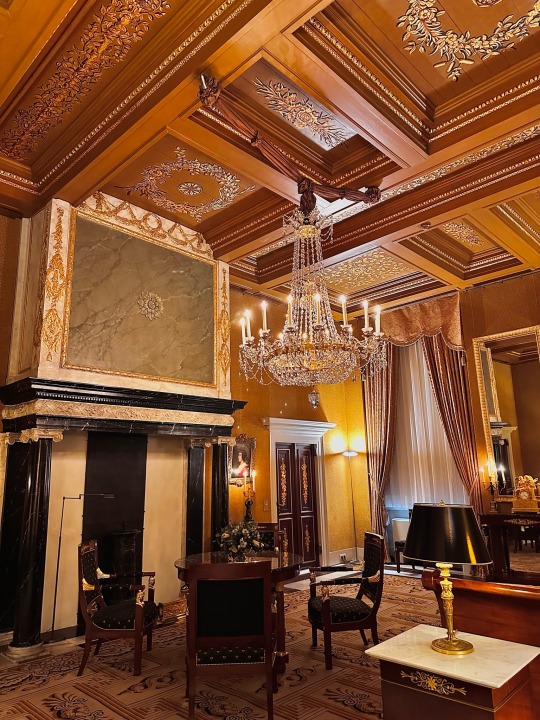
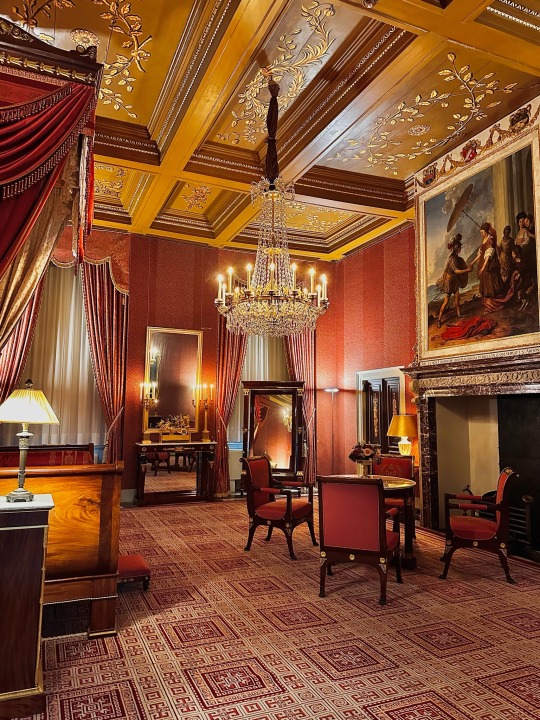



The palace was built as a city hall during the Dutch Golden Age in the 17th century. The building became the royal palace of King Louis Napoleon and later of the Dutch Royal House.
The palace is used by the monarch for entertaining and official functions during state visits and other official receptions, such as New Year receptions.
The three floors are crowned by a dome with a weathervane in the shape of a ship. It is decorated with marble inside. Astride the rear of the building is a 6-metre-tall statue of Atlas carrying the Globe on his shoulders.
The Royal Palace houses one of the most complete collections of furniture and decorative and applied arts in the world, well preserved in the Empire style (about 2000 items).
Royal Palace of Amsterdam
Amsterdam, Netherlands 🇳🇱
#royal palace#amsterdam#netherlands#🇳🇱#netherlands 🇳🇱#places#royalty#interiors#marble statue#arhitecture#travel#museum#furniture#art style#iphone photography#beautiful photos#city#history#good vibes#atmosphere#dark academia#vibes#photo#photography#photoblog#rich#prestige#europe
41 notes
·
View notes
Photo
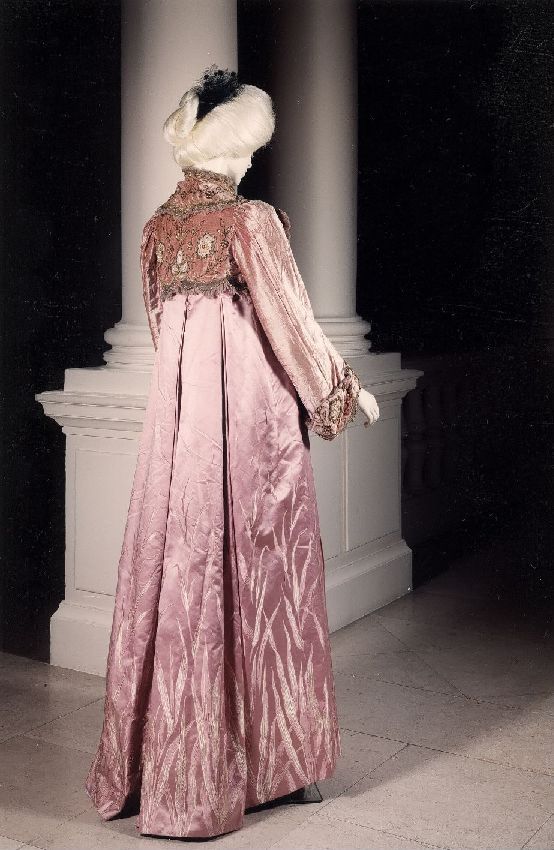


Tea Gown
c.1903-1905
Belgium
Royal Museums of Arts & History, Brussels, Belgium (Object Number: C.481)
#tea gown#fashion history#historical fashion#1900s#turn of the century#silk#satin#velvet#belle epoque#1903#1904#1905#pink#belgium#20th century#royal museums of arts and history
334 notes
·
View notes
Video
youtube
Nuxalk totem pole leaves B.C. museum to begin trek home, February 13, 2023
The Royal B.C. Museum in Victoria has repatriated a totem pole to the Nuxalk Nation on the central coast of B.C., after it was taken from their land more than 100 years ago. Members of the community say they hope the decision will make it easier to repatriate more of their items that are still in the museum.
CBC
Further reading:
CBC: Hugs, smiles and tears greet Nuxalk totem pole as it leaves Victoria, B.C., museum, February 23, 2023
#Nuxalk Nation#first nations#Royal British Columbia Museum#Victoria#Bella Coola#British Columbia#colonialism#United Nations Declaration of the Rights of Indigenous Peoples#repatriation#art#culture#Canada#museums#history#wood#sculpture#identity#carving#Snuxyaltwa#CBC#news#20th century#19th century#Louie Snow#Deric Snow#Talleomy#South Bentinck
66 notes
·
View notes
Text

Francis FitzRoy Dixon (b. Batticaloa, Ceylon 1856 - d. Ottawa, Canada 1914) Orange-Breasted Green Pigeons, 3 March 1880 Watercolour over graphite on wove paper, 19.5 × 32.8 cm Royal Ontario Museum 2017.66.181.7
#Francis FitzRoy Dixon#Royal Ontario Museum#animals in art#birds in art#19th century art#bird#painting#birds#pigeon#pigeons#pair#watercolor#colonial art#Orange-Breasted Green Pigeon#species ID#natural history art
16 notes
·
View notes
Text

London (CNN) — An art historian has identified a missing portrait of King Henry VIII after spotting it on social media.
British fine art researcher Adam Busiakiewicz was idly scrolling on X when he was stopped in his tracks by a post from somebody he follows.
The post was a photograph shared by Tim Cox, Lord Lieutenant of Warwickshire, an honorary position representing the British Crown in the central English county.
It showed a gathering at a reception in Warwick’s Shire Hall, where Warwickshire County Council is based.
But Busiakiewicz wasn’t interested in the people smiling at the camera.
His focus was on the background where, hanging on a wall, was what he suspected was a missing portrait of the Tudor monarch Henry VIII.
In a post published on his blog earlier this month, Busiakiewicz said he had been “scrolling at speed” when he spotted the painting “with a distinctive arched top” on the wall.
He was immediately reminded of a series of 22 portraits commissioned by a local politician and tapestry-maker during the 1590s.
According to Busiakiewicz, Ralph Sheldon (1623–1684) commissioned the pictures – which were mostly of kings, queens and “significant contemporary international figures” – to hang in his home, Weston House in Warwickshire.
The reason they had arched tops was because they “were once incorporated into an architectural frieze of the Long Gallery at Weston,” Busiakiewicz said.
In a press release sent to CNN, Busiakiewicz said the arched top was a “special feature of the Sheldon set,” while the painting’s frame was “identical to other surviving examples.”
The painting also showed the king holding a sword and wearing a feathered hat – just as he appeared in an engraving of the Long Hall made by antiquarian Henry Shaw in 1839.
The series of portraits was later dispersed at auction and “the majority remain untraced to this day,” according to Busiakiewicz.
After making his theory public, Busiakiewicz visited Warwick’s Shire Hall together with local historian Aaron Manning to see the painting close up.
“The portrait is large, and completely in-line with the other Sheldon portraits,” Busiakiewicz wrote in a later blog post, on July 22.

In a telephone call with CNN, Busiakiewicz revealed that this was not the first discovery he had made thanks to social media.
In 2018, he stumbled across a picture a friend had taken at a wedding and posted on Instagram.
It featured a portrait that he identified as the work of 17th-century female artist Joan Carlile (1606–1679).
“Social media is a crazy thing,” Busiakiewicz told CNN, “because some people use it to watch cat videos and follow what’s going on in the world, and then people like me just look at what people have hanging on their walls.”
A spokesperson for Warwickshire County Council told CNN in an email that Busiakiewicz and Manning approached them about the painting and arranged to come and see it.
“Adam and Aaron viewed the painting at Shire Hall, and have confirmed they think it is definitely one of the Ralph Sheldon commissions,” the spokesperson wrote.
“Since this discovery, the painting has been moved into our Museum Collections Centre to allow further research to take place.”
Busiakiewicz told CNN that the identity of the painter is not known, but the creator of the portraits is sometimes referred to as "The Sheldon Master.”
He is now working on trying to establish the painting’s provenance.
It was acquired by the council as recently as 1951 but there are gaps in the records.
“Provenance is always such a really tricky thing - it’s very hard sometimes to find, particularly when pictures are sold privately. But there’s no doubt that this is Ralph Sheldon’s painting of Henry VIII,” he said.
“Looking at paintings and pictures of paintings is my life and it’s great fun, particularly when you can in some way right a historic wrong, let’s say.
Pictures that are overlooked, pictures that aren’t appreciated as much as they might be.”

#King Henry VIII#British Royal Family#House of Tudor#tudor dynasty#Adam Busiakiewicz#Tim Cox#Lord Lieutenant of Warwickshire#Shire Hall#Warwickshire County Council#missing portrait#art history#Ralph Sheldon#Weston House#Warwickshire#Long Hall#Henry Shaw#Aaron Manning#Joan Carlile#Museum Collections Centre#The Sheldon Master#paintings
6 notes
·
View notes
Text
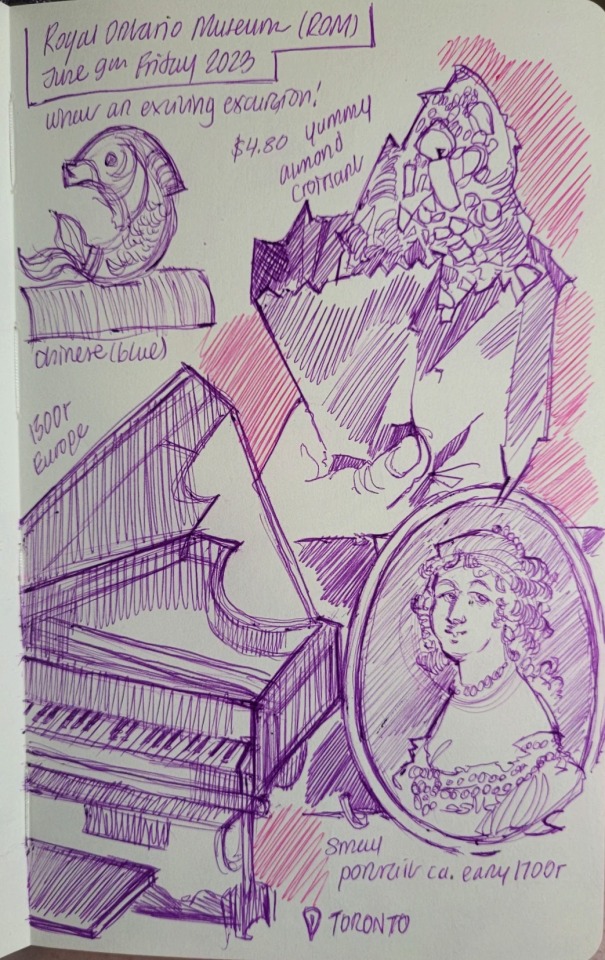

Royal Ontario Museum (ROM) artifacts and mementos! Sketched in purple/pink ballpoint pen.
#royal ontario museum#rom#artifacts#history#european history#french history#british history#egypt#rome#bacchus#ceres#ancient greece#aphrodite#art#traditional art#art journal#sketchbook#toronto#my art
30 notes
·
View notes